This is the homepage for the paper
"Statistical Region Merging"
by R. Nock and F. Nielsen, appearing in
IEEE Transactions on Pattern Analysis and Machine Intelligence, 2004.
Draft
The final paper is available here .
.
Source C
The zipped source C is available: click here (<100 Ko) .
(<100 Ko) .
Linux binaries (old)
(these binaries are a bit old now; you may directly use the Source
code above)
The gzipped binary (Linux) is available: click here (40 Ko) .
(40 Ko) .
Unzip the file (gzip -d srm.gz), and then enter a command line.
A slight help is available by entering
Below is this help you get:
./srm: option requires an argument -- h
Usage :
./srm [option]* -s input.tiff output.tiff
Welcome on srm (Statistical Region Merging), By R. Nock and F. Nielsen
Important notice on this software:
* it is provided AS IS, without ANY guarantee
* it is provided for RESEARCH PURPOSE ONLY
Options:
h : displays this help
S : in {0,1,2,3}, type of output (0=bordered regions with original pixels,
1=black-bordered regions with white pixels,
2=bordered regions with average-color pixels,
3=randomized colored regions)
B : 0-2, border color
0=black (valid for S=0,2)
1=white (valid for S=0,2)
2=no border (valid for S=0,2)
P : 0-1, saves (when P=1) the (at most) 15 largest regions of the segmentation
in files named [output.tiff]_RegionX, for X=0, 1, ...
T : in {0,1,2,3,4}, type of noise (0=no noise,
1=transmission noise,
2=salt and pepper noise,
3=Gaussian (Cf Xu et al., PRL (19) pp 1213--1224, 1998),
4=artificial occlusions (s random occlusions) )
N : 0-100, % of pixels having noise (transmission, salt and pepper),
>0 : sigma (Gaussian noise)
>0 : s (random occlusions)
U : 0-1, type of neighborhood for sorting couples:
0 : original (Delta=0)
1 : for noise handling (Delta=10)
G : 0-1, convolution filter for sorting couples:
0 : no
1 : Sobel-type of arbitrary size
F : >1, parameter for the size of the convolution filter when G=1 (actual size=2*F+1):
O : 0-1, occlusions merging (0 is No, 1 is Yes)
Q : >=1, complexity parameter of the statistical model (Cf paper)
Default settings: S=B=P=T=N=U=G=O=0, Q=32
Notices:
* noisified images are also saved; the Filename is [output.tiff]-original-noisified
* when P=1 and images are noisified, the regions saved are those of the -original image-
Images and experiments
The following table displays a sample of SRM's results.
Please note the following:
- images are represented with their original size;
- images are put in the appearence order of the drafts (figures/position in tables);
- figure references are those of the submission drafts;
- for each image, we also give some of the largest regions found by SRM;
- the image names are those of the drafts; if you click on the image name, you retrieve a gzipped .tif copy of the original;
- to avoid eventual downloading problems for the images, we suggest to right click + select "Save Link As..." on the desired image link;
- command lines are also given: cut and paste to rerun the experiments.
House (Fig. 9)
(Fig. 9)
Command lines :
./srm -S 0 -B 1 -G 1 -F 2 -Q 1 -s house.tif house-result-1.tif
./srm -S 0 -B 1 -G 1 -F 2 -Q 2 -s house.tif house-result-2.tif
./srm -S 0 -B 1 -G 1 -F 2 -Q 4 -s house.tif house-result-4.tif
./srm -S 0 -B 1 -G 1 -F 2 -Q 8 -s house.tif house-result-8.tif
./srm -S 0 -B 1 -G 1 -F 2 -Q 16 -s house.tif house-result-16.tif
./srm -S 0 -B 1 -G 1 -F 2 -Q 32 -s house.tif house-result-32.tif
./srm -S 0 -B 1 -G 1 -F 2 -Q 64 -s house.tif house-result-64.tif
./srm -S 0 -B 1 -G 1 -F 2 -Q 128 -s house.tif house-result-128.tif
./srm -S 0 -B 1 -G 1 -F 2 -Q 256 -s house.tif house-result-256.tif
| Original image |
 |
| -Q 1 | -Q 2 | -Q 4 | -Q 8 |
-Q 16 | -Q 32 | -Q 64 | -Q 128 |
-Q 256 |
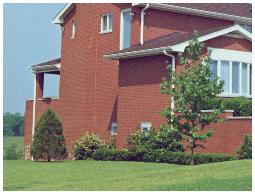 | 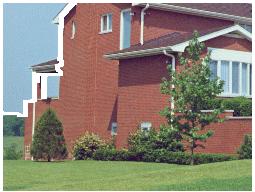 |
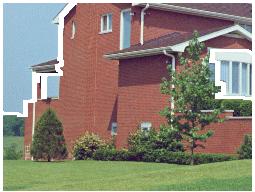 | 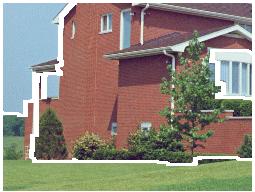 |
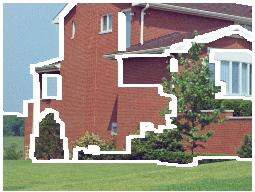 | 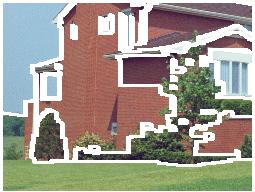 |
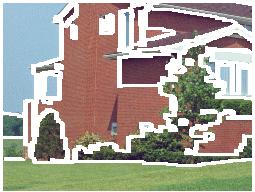 | 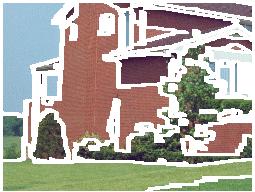 |
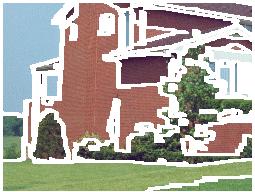 |
BSDB experiments
Additional experiments of SRM (and other
image processing algorithms as well) are available on The Berkeley Segmentation Dataset and Benchmark. A webpage
is devoted to this repository, and you will find it here .
.
Windows material
To get the Windows version of SRM, please click here .
.
Feedback
Your feedback is much appreciated. Your can reach us at rnock@martinique.univ-ag.fr,
or at Nielsen@csl.sony.co.jp.










